
Vultures: One of the environment’s most necessary — but often overlooked — creatures.
These intelligent birds are uniquely equipped to keep the environment clean and help prevent the spread of disease.
A world without vultures?
A world without vultures would be a foul-smelling place filled with disease and rotting carcasses — let’s hear it for these unsung environmental heroes!
Vulture Fact 1: There are 23 species of “vultures”: 16 Old World vultures found in Africa, Asia, and Europe, and seven New World vultures (including the two condors) found in the Americas. (A list of vulture species is provided below.)
Vulture Fact 2: Old World and New World vultures are actually not closely related. However, because both groups perform highly specialized functions, they have developed similar biological traits.
Vulture Fact 3: Old World vultures do not have a good sense of smell – they rely exclusively on incredible eyesight to locate food – a soaring vulture can spot a 3-foot animal carcass from 4 miles away.
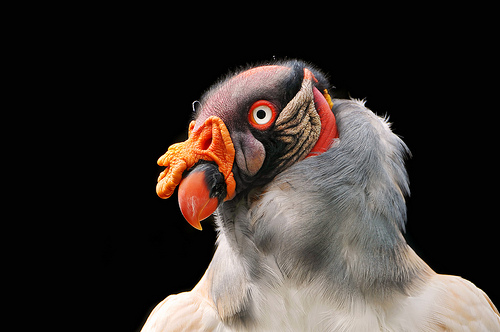
Vulture Fact 4: Several species of New World vultures have a good sense of smell, unusual for raptors.
Vulture Fact 5: The Rueppell’s griffon vulture is the world’s highest flying bird. In 1973, one collided with an airplane off the Ivory Coast; at the time, the plane was flying at 37,000 feet.
Vulture Fact 6: Vultures can eat up to 20 percent of their own body weight in one sitting.
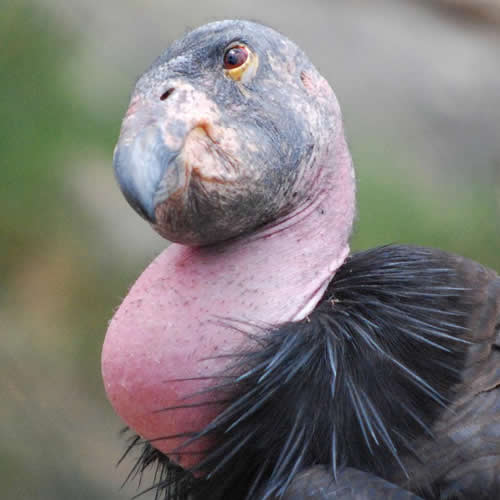
Vulture Fact 7: Vultures are equipped with a digestive system that contains special acids that will dissolve anthrax, botulism, and cholera bacteria.
Vulture Fact 8: Vultures do not go after healthy prey, but will attack wounded and dying animals.
Vulture Fact 9: New World vultures have the unusual habit of urohydrosis — defecating on their legs to cool them by evaporation.
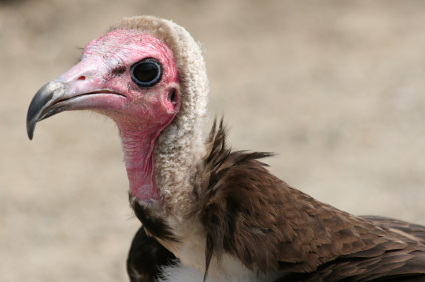
Vulture Fact 10: The bald, or lightly-feathered, head is specially designed to stay clean even when confronted with blood and bodily fluids present in the carcasses. Any remaining germs are baked off by the sun.
Vulture Fact 11: A group of vultures is called a venue, and when circling the air, a group of vultures is called a kettle.
Vulture Fact 12: By consuming the carcasses of diseased animals, vultures prevent the spread of life-threatening diseases such as rabies and anthrax among animals and humans.
Vulture Fact 13: Most vulture species mate for life.
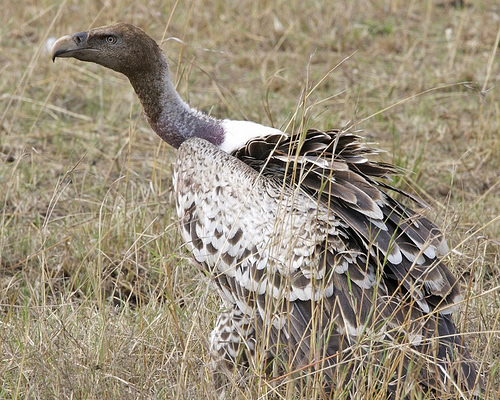
Vulture Fact 14: The vomit of a vulture, followed by the action of flying away, is the most common defensive tactic against an adversary. If the food is relatively undigested, the predator is rewarded with a free meal. If the food is mostly digested, the foul-smelling substance acts as a deterrent and will sting the eyes of a predator if it lands in their face.
Vulture Fact 15: Most vultures are social and several species can often be seen feeding together on the same carcass.
Vulture Fact 16: One of the few animals to use tools, Egyptian vultures use rocks to break open ostrich eggs
Old World and New World vulture species
Old World vultures
- Eurasian Black Vulture or Monk Vulture, Aegypius monachus
- Lammergeier or Bearded Vulture, Gypaetus barbatus
- Palm-nut vulture, Gypohierax angolensi
- Griffon vulture Gyps fulvus
- Indian White-Rumped vulture, Gyps bengalensis
- Rueppell’s Vulture, Gyps rueppelli
- Long-billed Vulture or Indian Vulture, Gyps indicus
- Slender-billed Vulture, Gyps tenuirostris
- Himalayan Griffon Vulture Gyps himalayensis
- White-backed Vulture, Gyps africanus
- Cape Griffon, Gyps coprotheres
- Hooded Vulture, Necrosyrtes monachus
- Egyptian Vulture, Neophron percnopterus
- Red-headed Vulture, Sarcogyps calvus
- Lappet-faced Vulture, Torgos tracheliotus
- White-headed Vulture, Trigonoceps occipitalis
New World vultures
- Turkey Vulture, Cathartes aura
- Greater Yellow-headed Vulture, Cathartes melambrotus
- Lesser Yellow-headed Vulture, Cathartes burrovianus
- King Vulture, Sarcorhamphus papa
- American Black Vulture, Coragyps atratus
Condors:
- California Condor, Gymnogyps californianus
- Andean Condor, Vultur gryphus
International Vulture Awareness Day is celebrated on the first Saturday in September. Check out vultureday.org to learn more.
Adapted from 16 Cool Facts About Vultures by Rhishja Cota-Larson, originally published 05 September 2009 on Ecolocalizer.
Photo credits: Lappet-faced vulture flickr.com/photos/cookipedia/ / CC BY 2.0; King vulture flickr.com/photos/jonhanson/ / CC BY-SA 2.0; California condor flickr.com/photos/rolandojones/ / CC BY-ND 2.0; Rueppell’s griffon vulture flickr.com/photos/lipkee/ / CC BY-SA 2.0; Hooded vulture © iStockphoto.com
Sources: Discovery, BBC, avianweb.com, Wired.

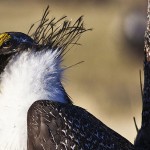

![Mediterranean Massacre: Illegal Killing of Migratory Birds [Graphic Video]](https://annamiticus.com/wp-content/uploads/2016/05/Illegal-bird-killing-150x150.png)

1 thought on “16 Things You Might Not Know About Vultures”
Comments are closed.